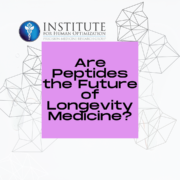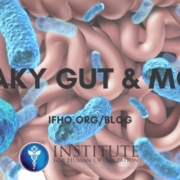EXTRACELLULAR MATRIX
The extracellular matrix is a network of proteins and other molecules in the space between cells. It helps cells attach to one another and move around. You can think about this like scaffolding for building a house: it provides support and structure for all kinds of activities inside the cell without getting too involved in how those things happen. When there’s damage or injury, it also sends signals to help repair or replace damaged parts of tissue by recruiting stem cells from elsewhere in the body. In this blog post, we will explore how extracellular matrix regulation works to maintain homeostasis from birth to death so you can better understand your body’s natural aging process!
WHAT IS THE EXTRACELLULAR MATRIX?
The extracellular matrix (ECM) is a dynamic structure that provides a structural framework for cellular organization and movement. It is a three-dimensional space, extending between cells that are defined by components produced by the cells themselves as well as cells that they neighbor.
The ECM consists of a dynamic mixture of structural proteins which are typically secreted from the cell into the extracellular environment. The extracellular matrix is made up of many components, including molecules like collagen and elastin, macromolecules like glycoproteins or proteoglycans, proteins like adhesion proteins that allow cells to bind to each other, growth factors that signal new tissue formation, and others.
Collagen is one of the most prominent components of the extracellular matrix. It provides strength and stability to tissues and is primarily responsible for wound healing and tissue repair.
There are many types of glycoproteins, or proteoglycans, which give the matrix its winding appearance, similar to DNA’s iconic double helix. These macromolecules allow cells to recognize and bind to the matrix components.
Several types of adhesive proteins promote cell-to-cell contact, which can be found on either side of a plasma membrane where they’ll spread out from the cell’s surface towards the extracellular matrix. These proteins will crosslink, or bond together with other adhesive proteins to form a mesh that reinforces the adhesive bond between cells.
4 Major Purposes of the Extracellular Matrix:
Containment of cell growth: This refers to how the matrix can “wrap” around cells while still allowing them to grow in size while confined by the surrounding ECM.
Cell signaling and communication: Cell signaling and communication refer to how cells can send signals through the matrix so that growth and development happen in the right place at the right time.
Binding cells together to form tissues or organs: The adhesion proteins that hold cells together can also link them to the extracellular matrix.
Removal of dead or damaged cells from the body: Cells are constantly dying and being replaced, so the ECM will send signals to attract stem cells that can migrate towards their location within tissue in order to repair or replace damaged cells.
HOW DOES THE EXTRACELLULAR MATRIX REGULATE CELL BEHAVIOR?
The extracellular matrix is a critical mediator of cell behavior. In fact, cells respond to their environment by changing shape and altering gene expression in order to perform their job properly.
Cell adhesion: This refers to how cells bind together very tightly with adhesive proteins that can crosslink with other adhesive proteins across the plasma membrane so they strengthen the bond between cells.
In order for cells to join together correctly at the right times and places, they need to be able to sense their environment and respond by sending signals through a network of proteins that bind together in a very specific way. So if a developing embryo is going to form into multiple layers that will eventually become distinct tissues or organs, cells in each layer will need to bind to the ECM and pass signals through it to be able to change shape and function into whatever they’re supposed to become.
3 Types of Cell Adhesion:
Integrin: These proteins anchor cells to the extracellular matrix, primarily binding between adhesive proteins on one side of a plasma membrane and “integrin-binding sites” on the other side of the plasma membrane.
Cell-matrix adhesion: This refers to how cells can bind directly to ECM components, which involves integrins as well as other types of adhesion proteins.
Compartmentalization/Segregation: This refers to how cells can create closed boundaries that will separate different tissues from each other.
In order for cells to be able to create compartments, they need to regulate the way substances enter and exit the local environment. In fact, many types of tissue have a limited list of molecules that can diffuse across their borders in one direction or another – this is called “selective permeability”, and it’s a feature of many cell types.
2 Main Features of Selective Permeability:
1) Pores in the plasma membrane allow solutes to move through them but prevent water from moving freely through those pores, due to the presence of lipid bilayers. This allows cells to selectively control which molecules can enter or exit their local environment.
2) Cells can have a different level of permeability in different directions, so some proteins will move freely across the cell membrane while others cannot – this is called “anisotropy”.
HOW DOES SELECTIVE PERMEABILITY WORK?
Different types of cells can adjust how permeable their plasma membranes are to help create local boundaries and also take in the right molecular nutrients for their job. In regards to the extracellular matrix, the ECM can bind to integrins on the plasma membrane of cells, which helps create a boundary that separates tissues from each other. Integrins are the major cell adhesion proteins, which means they bind cells to the ECM. Cells will be able to pass molecules through the border into neighboring tissues, but if the molecule is too large it won’t fit through the pores of the membranes and therefore cannot go across. All cells have distinct levels of permeability in different directions to help create a very specific environment for each cell type.
EXTRACELLULAR MATRIX & LONGEVITY
Part of what allows cells to remain differentiated is the extracellular matrix. It provides cells with the appropriate molecular signals to maintain their state, and when they move to a different tissue it also helps ensure that they will behave correctly in their new local environment – which is why this system breaks down when there is damage or disease. Abnormalities in the extracellular matrix are linked with age-related diseases. When ECM is broken down, it releases many different molecules that can cause inflammation. Inflammation is an immune response meant to eliminate threats to the body, but chronic inflammation can be very harmful and eventually result in death. When this happens over time the extracellular matrix will degrade and build up in ways that are detrimental to our health. When this happens, it causes “inflamm-aging” which is when inflammation builds up over time due to wear and tear on the body.
As we age, the extracellular matrix continues to degrade in many ways. The aging process involves many deleterious changes in the cells and tissues of an organism, which can affect how it functions. Lifestyle factors may accelerate the degradation of the extracellular matrix. Since ECM is responsible for cellular differentiation, preventing this degradation could lead to greater longevity because it would allow cells to maintain their state and continue functioning properly.
Disclaimer: The content is not intended to be a substitute for professional medical advice, diagnosis, or treatment. Additionally, the information provided in this blog, including but not limited to, text, graphics, images, and other material contained on this website, or in any linked materials, including but not limited to, text, graphics, images are not intended and should not be construed as medical advice and are for informational purposes only and should not be construed as medical advice. Always seek the advice of your physician or another qualified health provider with any questions you may have regarding a medical condition. Before taking any medications, over-the-counter drugs, supplements or herbs, consult a physician for a thorough evaluation. Always seek the advice of your physician or other qualified health care provider with any questions you may have regarding a medical condition or treatment and before undertaking a new health care regimen, and never disregard professional medical advice or delay in seeking it because of something you have read on this or any website.













Leave a Reply
Want to join the discussion?Feel free to contribute!